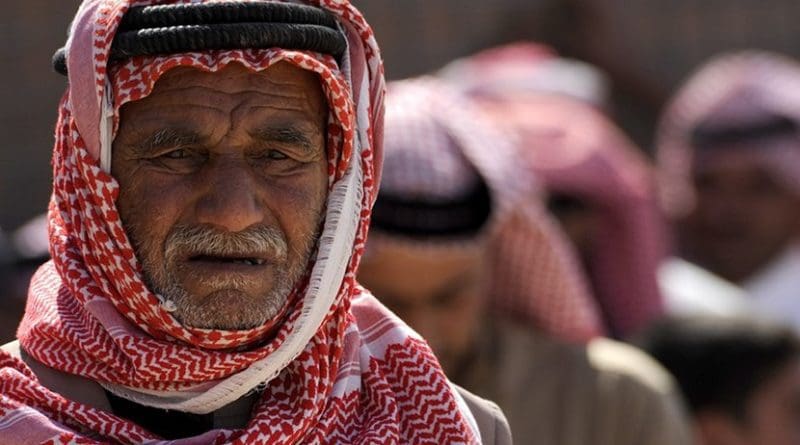Iraq: Why The ‘Intra-Shia Civil War’ Narrative Is Flawed – Analysis
By IPCS
By Pieter-Jan Dockx*
Since the parliamentary election in May 2018, deep divisions among Iraq’s various Shia factions have come to the surface. This has led numerous analysts to deduct or predict the beginning of a new intra-Shia civil war in the country. The narrative that has emerged alongside these claims describes two competing blocs. The first group mainly consists of the previous Prime Minister, Haider al-Abadi, and cleric, Moqtada al-Sadr. The other bloc is comprised of the various factions of the Popular Mobilisation Forces (PMF) led by Hadi al-Amiri, and former Prime Minister, Nouri al-Maliki. While these two factions did indeed form in the parliament to influence the government formation process, the different components of the prevailing narrative are vast oversimplifications of a complex reality. More specifically, the overemphasis on external players, inter-bloc pertinacity and intra-bloc cohesion draws away from the significance of local figures’ interests and agency.
External Actors
The narrative tends to frame the division as part of the conflict between the US and Iran, the two most important external players in Iraq. In this line of thought, Abadi, but also to some extent Sadr, is considered to represent American interests. Amiri and Maliki are seen as doing Iran’s bidding. However, in reality, these ties are not as robust and static as portrayed. Furthermore, the overemphasis on the principal–agent model to characterise these relationships also underestimates the considerations of domestic actors.
Although Washington’s and Sadr’s interests do overlap to a certain extent, this is coincidental and not premeditated. A decade ago, Sadr was still considered as Washington’s foremost enemy due to his violently staunch resistance to the US’s presence in Iraq. To this day, Sadrists continue to call for the withdrawal of US forces from the country. Furthermore, while Abadi does indeed enjoy a good relationship with the US, until recently, the same could be said about his rapport with Tehran. His skilful balancing act only came to a standstill after he declared his intention to abide by the renewed US sanctions on Iran, making Tehran turn further towards alternative actors.
However, despite their well-known affiliation with Iran, these alternative actors, Amiri and Maliki, have not refrained from engaging with Washington either. During the recent war against the so-called Islamic State (IS), the US and Amiri’s PMF tacitly coordinated their efforts under a joint-command. In the subsequent run-up to the May 2018 parliamentary election, both sides openly courted each other, expressing their mutual desire for future collaboration. Even the Asa’ib Ahl al-Haq, a more radical PMF faction, issued an unexpected public apology for the killing of US soldiers. Moreover, for years Maliki was considered Washington’s main man in Iraq. It took until the emergence of the IS for the US to decisively turn away from Maliki and seek regime change.
Inter-bloc Engagement
The narrative framework also portrays both blocs as being almost mutually exclusive and their differences as irreconcilable. Yet, an inquiry into the recent past points to the existence of cross-cutting cleavages. Prior to the May 2018 election, Abadi did not align himself with Sadr, and instead attempted to form a coalition with Amiri and his PMF. It was only after this partnership failed that collaboration between Abadi and Sadr seemed almost inevitable. Thus, the prevailing structures of coalitions are in part a consequence of a failed attempt at alliance-building across the divide, one which is now being perceived as insurmountable.
Also in the aftermath of the May 2018 polls, players from the opposing factions either found common ground or attempted to work towards that goal. In September 2018, the de facto leaders of the respective blocs, Sadr and Amiri, jointly agreed to install Abdul-Mahdi as the country’s new prime minister. Before that, both leaders had even been on the verge of uniting their own factions, which would have led to a breakup of the two blocs. In a similar fashion, Abadi and Maliki, who hail from the same party but contested elections on separate electoral lists, tried to bridge their differences and reunite the party. As the split was turning out to be too severe, the former prime ministers remained in their respective blocs and the status-quo prevailed.
Intra-bloc Discord
These negotiations and agreements between figures from opposing blocs also expose their internal rivalries and mistrust, contradicting the notion of intra-bloc unity. Although Sadr’s and Abadi’s policy objectives already converged during the latter’s tenure as prime minister, the pair’s competition over the symbolic leadership of the reformist movement came in the way of their mutual support. Sadr’s abovementioned agreement with Amiri on the prime ministership also ended Abadi’s ambitions for a second term in office. Even at this very moment, contention over the vacant governor position is again impairing bloc harmony.
The short-lived electoral alliance between Abadi and Amiri illustrated the existence of similar disagreements in the Amiri-led bloc. Immediately after the agreement was announced, rifts began to emerge between the various factions that make up the PMF. When those who most vehemently rejected the agreement threatened to withdraw from the PMF’s political alliance, the deal with Abadi was abandoned to protect internal unity.
In summary, an inquiry into the past behaviour of the various actors lays bare a reality more intricate than the prevailing narrative presumes. Friction between allies and engagement—among blocs and with external powers—contradicts the reductionism inherent in the narrative. Moreover, because this narrative does not take local dynamics into account, its framework is ill-suited to serve as a basis for any analysis of contemporary Shia politics in Iraq.

